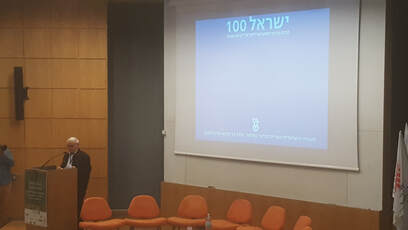 As an intrinsically multi- and interdisciplinary subject, conservation biology can greatly benefit by integrating the work of spatial and strategic planners and by encouraging conservation scientists to participate in planning processes. The 2nd meeting of the Israeli Chapter of the Society for Conservation Biology emphasized the importance of linking biological conservation with strategic planning by featuring a plenum panel discussion on “Israel 100 - Planning, Ecological Thresholds, and Biological Conservation.” Israel 100, a multi-disciplinary and multi-institutional initiative for strategic planning for Israel’s centennial (2048), was presented by Professor Shamay Assif of Technion’s Faculty of Architecture and Town Planning. Assif, as former head of planning at the Israeli Ministry of Interior and former chief engineer of Tel-Aviv (among other positions), has extensive experience in dealing with complex planning issues and has had tremendous influence on national and urban strategic planning in Israel – experience he now brings to his guiding work on Israel 100. Assif shared with the audience the process now taking place to analyze multiple trends and emerging societal needs in Israel, and integrate them into national strategic planning. Ofer Lerner, a professional planner, showed how the Technion is contributing its part to this national effort by identifying particular and crucial societal trends that will need to be addressed in Israel’s near future. Dr. Miri Tsalyuk, currently a post-doctoral fellow at Hebrew University shared her progress on defining ecological “red-lines”, work being conducted with Professors Eran Feitelson and Eli Stern and others. Following the presentations of representatives of the Israel 100 planning team, key figures in the conservation community in Israel were asked to respond, including Dr. Yehoshua Shkedy (Chief Scientist of the Israel Nature and Parks Authority), Professor. Tamar Dayan of Tel-Aviv University, Iris Hann (planner, lawyer and CEO of the Society for the Protection of Nature in Israel) and Professor. Alon Tal of Tel-Aviv University. The panelists challenged our capacity to safeguard biological conservation in Israel with a continuously growing human population. Indeed, as Prof. Assif suggested, Israel 100 needs to plan for building “a second Israel” in order to facilitate for the country’s growing demand for housing, infrastructure and economic development. “Red Lines” were also debated, including whether we can rely on strictly defined reserves and open spaces for long-term biodiversity conservation, or whether conservation must take place at all levels and under all types of land use regimes. The importance of ecological corridors was discussed, with an understanding that some of Israel’s designated corridors are in danger of closing due to encroaching construction and development. The conference keynote speakers, Prof. Kevin Gaston and Dr. Monika Böhm, provided concluding remarks, highlighting the need for clear and specific targets for conservation planning in Israel and urged that the state of biodiversity in the world and in Israel should be seen as in crisis. Importantly, the audience had a chance to see how biodiversity conservation was being discussed and integrated into the strategic planning process, and how they – as conservation scientists – can take a more pro-active role in assuring the prioritization of biodiversity conservation in developing strategic and spatial plans, despite the immense challenges that exist and will emerge in the near future. They suggested that protection of our natural assets must be a fundamental basis for, not an additional component of, the Israel 100 process, and that we – as conservation scientists – should take a more pro-active role in assuring the prioritization of biodiversity conservation in developing strategic and spatial plans, despite the immense challenges that exist and that will emerge in the near future. Prof. Daniel Orenstein Faculty of Architecture and Town Planning, Technion – Israel Institute of Technology At the end of 2018, WWF published their twelfth, bi-annual report on the status of biodiversity, highlighting the importance of global conservation efforts - the living planet report. Their message is clear: unsustainable human activity is pushing the planet’s natural systems that support life on Earth to the edge. In the 1950s, the Great Acceleration began to dramatically increase the global human population by improving our quality of life, leading to an increase in the demand for energy, land, water, and increasing overall consumption. The products we consume, the supply chains behind them, the raw materials and export routes we use all have a significant impact on the environment. Scientists now claim that the Holocene period has ended and we entered a new era, the “Anthropocene”.
The index shows a general decline of 60% in population sizes from 1970- 2014 (Fig 20). The decline is especially evident in the tropics, with South and Central America experiencing a dramatic decline of 89% in population sizes since 1970. Freshwater species have also declined dramatically; 83% since 1970. Measuring biodiversity on Earth is complex, so this report also examines three other indicators, measuring changes in species distribution, extinction risks and changes in community composition. All of these draw the same picture - showing sharp drops or changes. The report listed habitat degradation, unsustainable exploitation of resources, invasive species and climate change as the main causes of the declines in biodiversity we see today (Figure 15). This latest assessment found that only one quarter of the earth is not currently being exploited by man. In the marine system, 6 million tons of fish have been removed from the oceans since the 1950s. Plastic is now found in all marine systems, from the coasts to the depths, with an estimate of between 4.8 to 12.7 million tonnes of land-based plastic waste entering the ocean in 2010 alone.
The report stresses that achieving this ambitious goal will require changes that come from governments, businesses, research, civil society as well as from personal choices and actions. The window of opportunity must be exploited in order to change the trajectory of biodiversity trends, by defining new targets for beyond 2020 and developing sustainable industries.
|
News published regularly in the ISCB newsletter. Maintained by Leigh Kroeger and Uri Roll Archives
May 2019
Categories
All
|
Proudly powered by Weebly
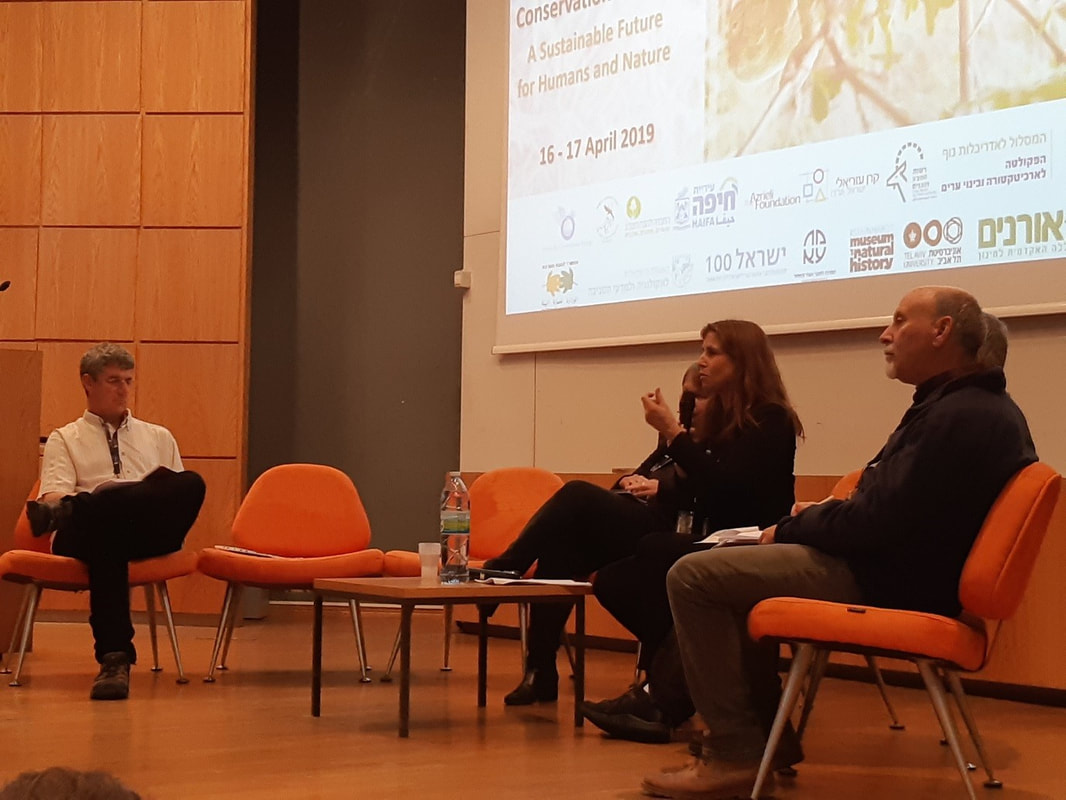
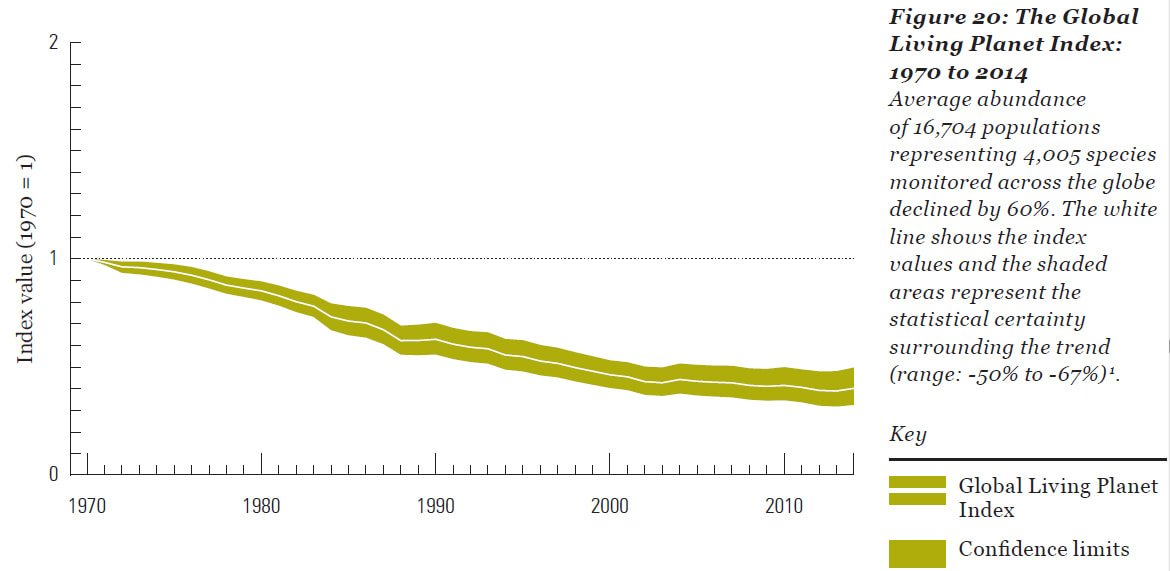
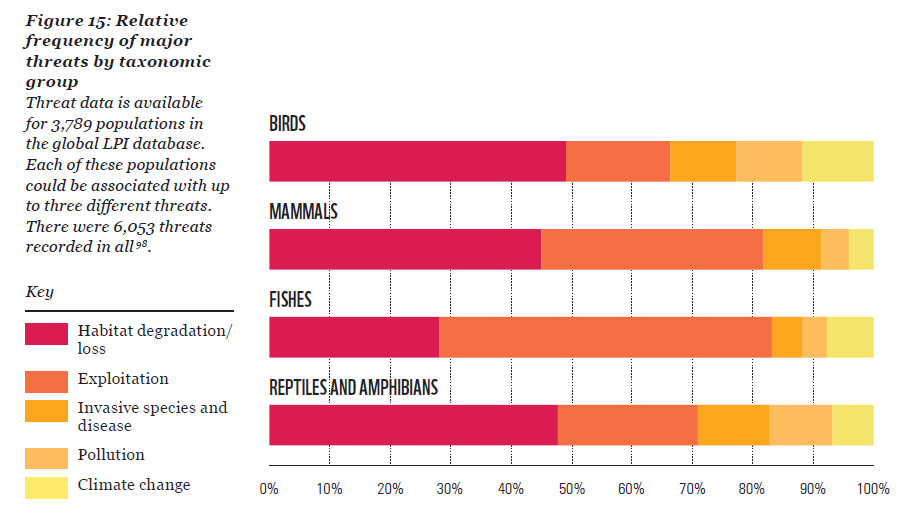
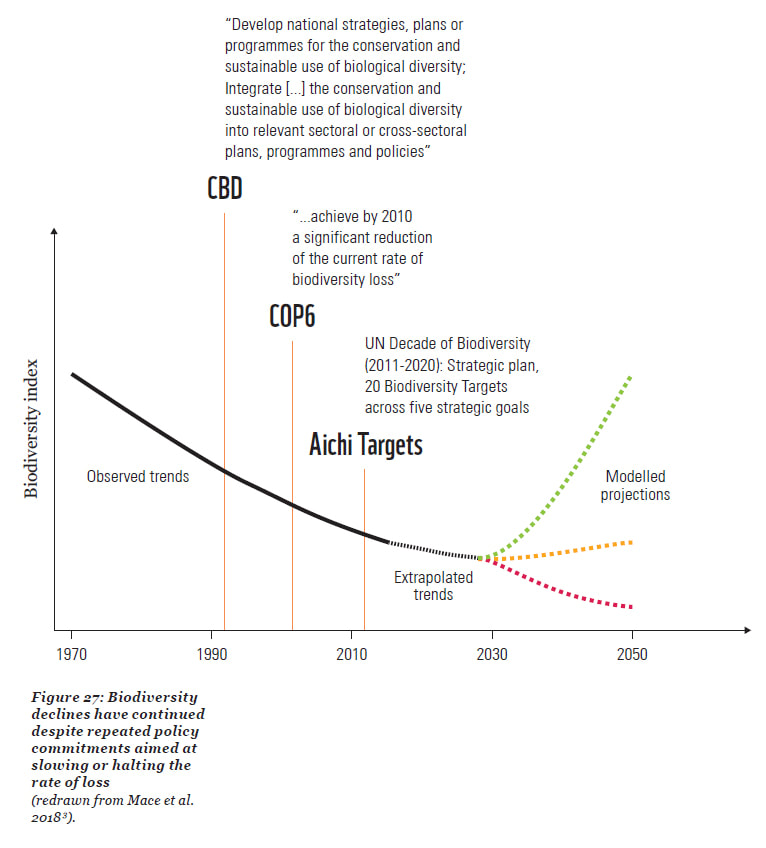
 RSS Feed
RSS Feed